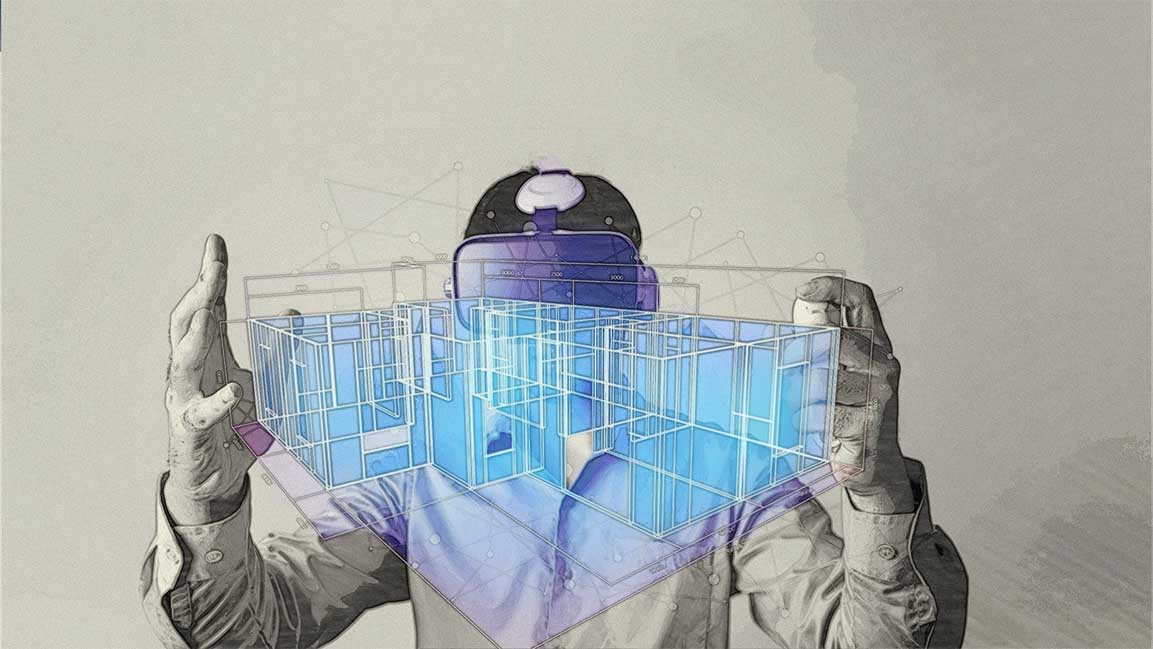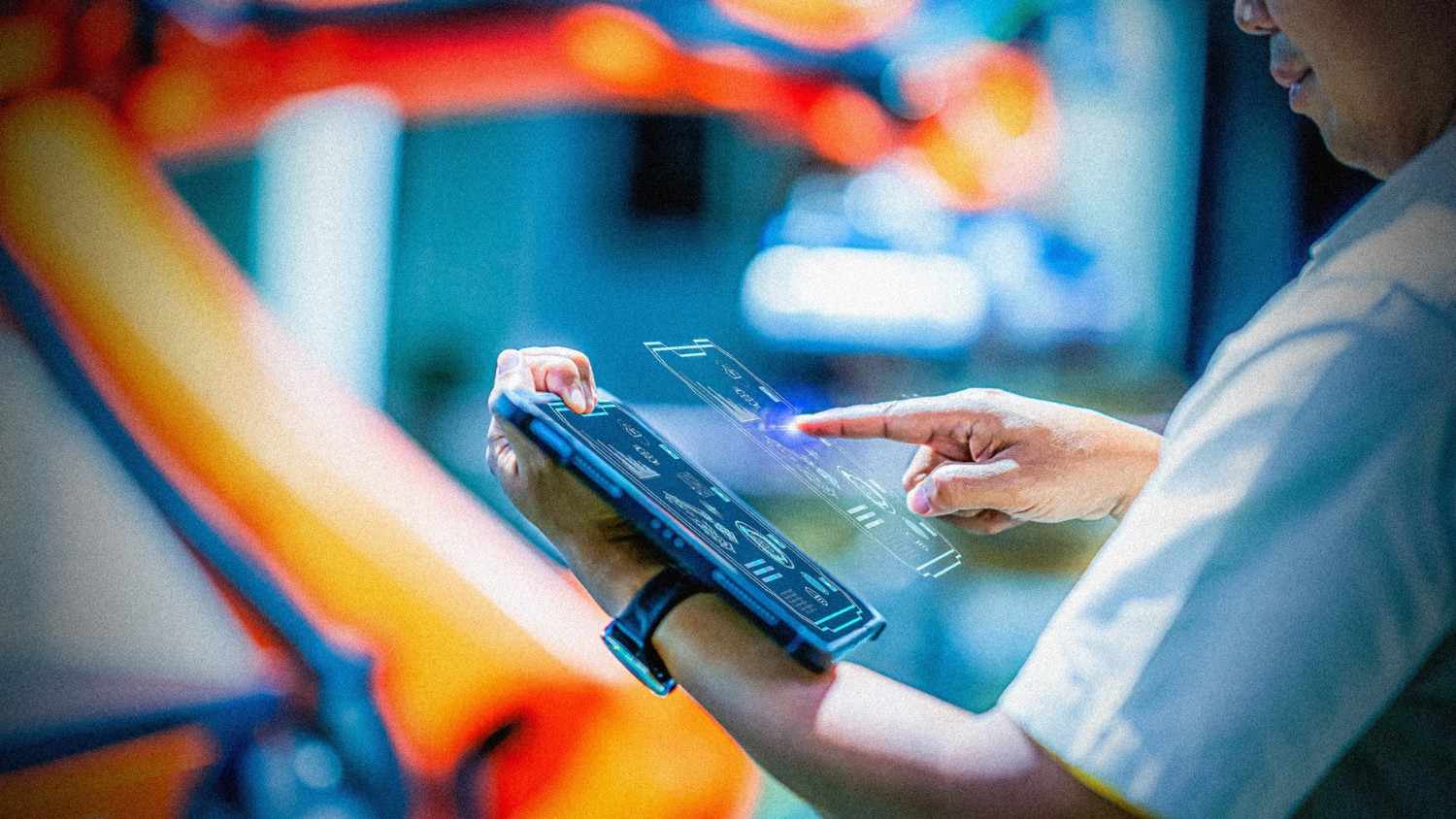- | 9:00 am
The construction industry in the Middle East is getting an augmented reality check
As augmented reality technology continues to evolve, it is likely to become even more widely used in the construction industry.

Imagine seeing the visualization of your design infrastructure through an iPad as you hold it up where the design additions are meant to be.
Investment in construction technology has more than doubled over the past decade, reaching $25 million, says data from a McKinsey report. As the demand for new and state-of-the-art projects rises, the construction sector has evolved by adopting advanced technologies, such as augmented reality (AR).
Global Market Insights’ report indicated that the AR market size is rapidly growing, with an estimated market value of $50 billion by 2024.
As the demand for innovative buildings increases, projects are getting more complex.
Experts note that AR technology is prevalent in visualization and design, offering on-site assistance, enhancing safety protocols, and streamlining project management and teamwork in the construction industry, including making adjustments to construction plans, identifying overlaps, promoting employee safety, and enhancing communication.
Some developers are combining various technologies, such as AR and Building Information Modeling (BIM), thus improving planning efficiency and ensuring timely project completion.
AIDING IN DESIGN VISUALIZATION
Paul Wallett, Regional Director of Trimble Solutions – Middle East and India, explains that their firm has integrated AR into various construction solutions, such as BIM visualization, on-site measurements, safety training, design review, and facility management. The firm’s AR application enables users to visualize BIM models in AR and helps industry experts to overlay digital models onto physical sites, aiding in design visualization, clash detection, and project coordination.
With AR tech, stakeholders can complete intricate procedures in different project stages, explains Wallett. “By superimposing virtual models onto the real world, experts can detect potential issues between different building systems before beginning construction and save time and cost by making required adjustments to the project design.”
Nasem Tamari, Digital Transformation Manager of Alpin Limited, also notes the various issues that AR tech solves. Besides enhancing collaboration, communication, and improved decision-making, it saves cost and time. “By identifying clashes and design issues early in the process, AR helps prevent costly rework and delays. It streamlines construction workflows, improves efficiency, and optimizes resource allocation.”
Beyond construction, Paul Paterson, CEO and founder of Elevation Sustainable Building Solutions, notes that AR facilitates maintenance work by overlaying building schematics onto the actual structure. “It allows teams to locate infrastructure components faster and perform work with less intrusion.”
AR also offers another aspect of safety training, says Mohamad Mustapha, Head of Digital Project Management of INEX Contracting and Interiors. “AR-based simulations and interactive modules helped train construction workers in a realistic virtual environment, reducing the risk of accidents and enhancing safety protocols.”
ACCELERATING ADOPTION
AR tech can enhance project outcomes, efficiency, productivity, safety, and stakeholder engagement. However, it still faces several roadblocks to its adoption.
First, Paterson points out that the initial implementation cost, including the development of AR applications, can be prohibitive, particularly for smaller firms. Adding to that, cybersecurity can be a concern, underlining the importance of robust security protocols.
Integrating advanced technology like AR into one of the world’s oldest and most significant industries poses several limitations while altering the conventional workflows and systems, says Wallett. “Maintaining the accuracy and calibration while aligning virtual overlays with the physical site is another common barrier.”
Educating and training employees on new technology is also a factor for its adoption in the industry.
Mustapha points out, “Some workers may be initially resistant to adopting AR technology due to a learning curve or concerns about job security.”
“AR implementation necessitates training the workforce to use the technology effectively,” Tamari says. “Construction companies need to invest in training programs to ensure that workers can operate AR devices and software proficiently.”
Some could resist change, notes Ibrahim Imam, co-founder and Group Co-CEO of PlanRadar. “There may be a reluctance to adopt new technologies due to concerns about disruption, productivity loss during the learning curve, and fear of job displacement.”
To overcome these barriers, Imam suggests that industry stakeholders, technology providers, and policymakers work together to create awareness. “They need to demonstrate the return of investment and ensure that the necessary infrastructure is in place to enable the successful implementation of AR technology in construction projects.”
WHAT THE FUTURE HOLDS
The scope of AR technology in construction is immense.
For one, there’s an emergence of remote collaboration and virtual site visits, says Wallett. “This enables stakeholders to collaborate and conduct inspections without being physically present.”
Mobile AR apps are also gaining popularity, they offer construction professionals on-site access to AR tools and information via smartphones or tablets. Paterson also notes that the advancement of wearable AR tools offers hands-free access to information and instructions, improves worker safety and productivity, and increases accessibility and usability of AR in the field.
Integration with BIM is a major trend. “Combining AR with BIM allows for enhanced visualization and real-time information updates, improving project coordination and decision-making,” says Mustapha.
The combination of AR with other technologies like the Internet of Things and artificial intelligence is also noteworthy. Tamari says, “Real-time data from IoT sensors can be overlaid onto the physical environment, providing valuable insights and facilitating predictive maintenance.”
Some firms are integrating more than AR tech, as it is encompassed under the broader scope of extended reality (XR). XR, which includes AR, virtual reality, and mixed reality, is also being used across the industry.
Wallett also points out how AR compares with mixed reality technologies. “MR combines virtual and physical aspects, allowing users to interact with virtual things in their physical environment, while AR overlays digital information onto the real world. While MR provides a composite environment, AR enhances reality.”
MR involves using specialized headsets, such as Microsoft’s HoloLens, which incorporates cameras, sensors, and displays to blend virtual and real elements. AR, on the other hand, is more easily deployable and enabled via devices such as smartphones, tablets, smart lenses, heads-up displays, and AR glasses, though smartphones are typically the go-to AR device used by most people. “Furthermore, AR provides the ability to connect via the cloud and synchronize with up-to-date digital virtual models,” he adds.
“By embracing AR technology and addressing the associated challenges, the construction industry can unlock significant benefits and drive innovation in the coming years,” concludes Tamari.








































